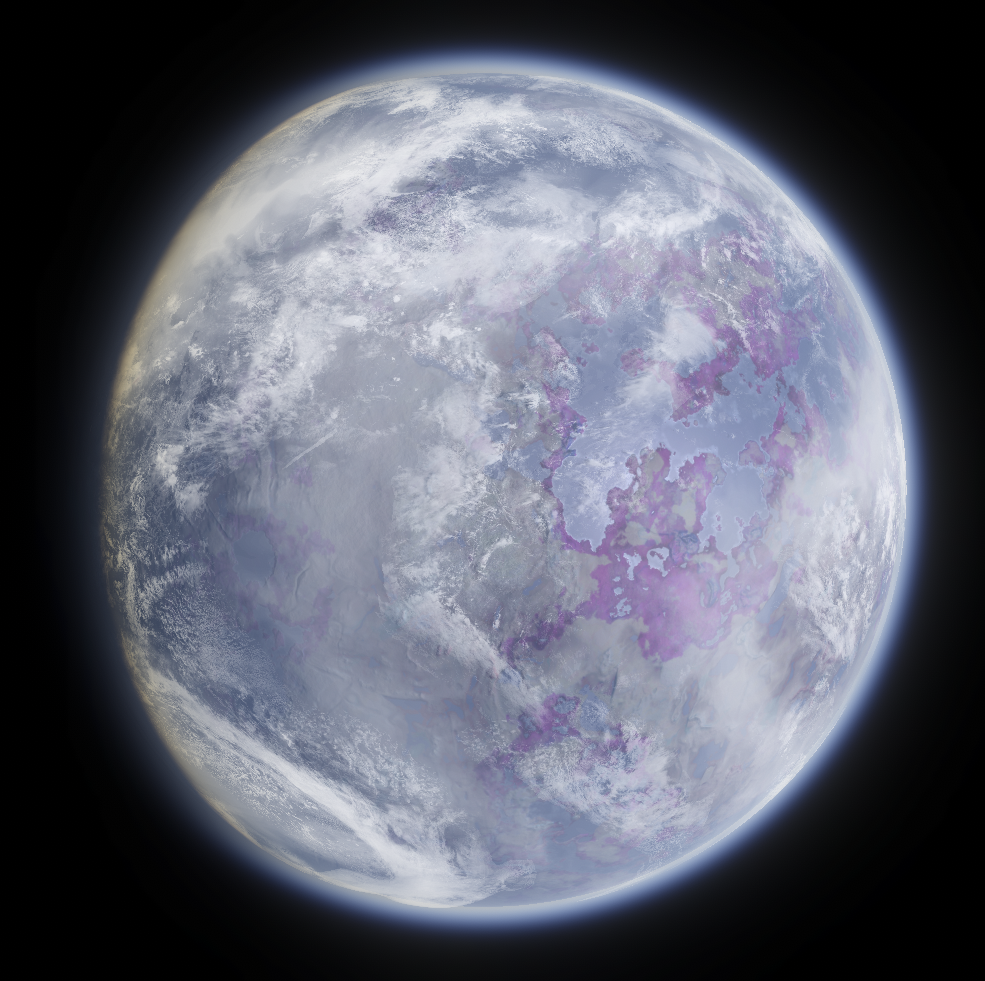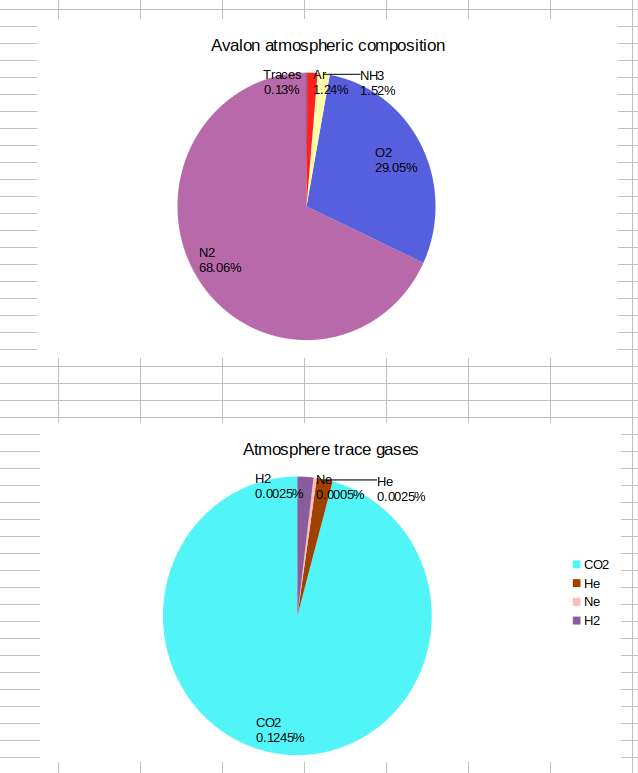Avalon

Avalon as seen from space
Mass |
7.58444e23 (0.126 M⊕) |
|---|---|
Radius |
4,537 km (0.711 R⊕) |
Gravity |
0.25 g |
Avg. Surface Temp |
244 K (-29.15 °C) |
Atmos. pressure at datum |
1.5 atm |
Rotation period |
Tidally locked |
Semi-Major Axis |
771,568 km |
|---|---|
Inclination |
0° |
Eccentricity |
0.018 |
Argument of Periapsis |
234.16 |
Period |
5 d, 7 h, 44 m, 41 s |
Avalon is the fourth moon from Valaya and the homeworld of the Avali. It is mostly covered by a mixture of Ammonia and Water, either in frozen or liquid form, with temperatures ranging as low as -70°C, with the most habitable areas being near the sea and close to the equator. It is also permanently covered in thick clouds, further reducing the amount of sunlight reaching its surface.
It mostly keeps its temperature through a combination of tidal heating, and the greenhouse effect. Infact, it is somewhat similar to Jupiter’s moon Europa in that the tidal heating has caused a massive underground ocean of water to form below the moon’s surface, that is so extensive in some areas, that it causes an effect similar to plate tectonics on earth, as parts of Avalon’s surface are floating on top of it. This ocean in combination with Avalon’s composition being mostly lighter substances (most notably ices), are the cause of its annomalously high radius, given its mass.
Its atmosphere is over 170 km tall, as the low gravity can barely hold it in place. Said atmosphere is mostly composed of Nitrogen, but with a significant Oxygen content as well, enabling the development of life on its surface.
Plantlife on Avalon has evolved different then on Earth, due to low lighting conditions. It uses a different substance for photosynthesis, which is of a dark purple, almost black, coloration, to capture as much of the incoming sunlight as possible. Seen from space, this color mixes with that of the ground, resulting in large patches of light purple where Avalon’s forests are.

Atmospheric composition charts for Avalon
`
This wiki focuses exclusively on the solar system itself, so I decided not to go into detail when it comes to life on Avalon itself. You can read Todd Avali’s lore book for that. The only thing I wrote about is the coloration of the plant life, as this would influence the moon’s appearance from space.
Also, Avalon’s orbit was precisely calculated using a tidal heating equation to actually have the same tidal heating energy generated inside it as Europa. Said formula involved a lot of paramters and even a complex number, but I do believe the result is correct.
`